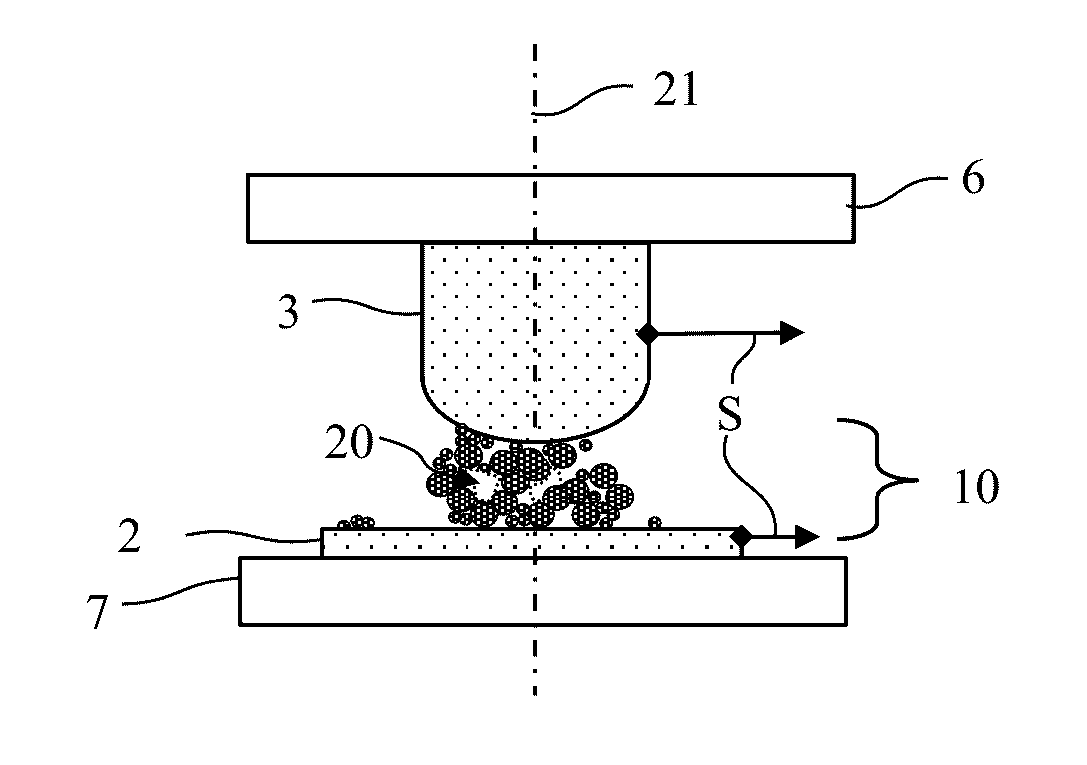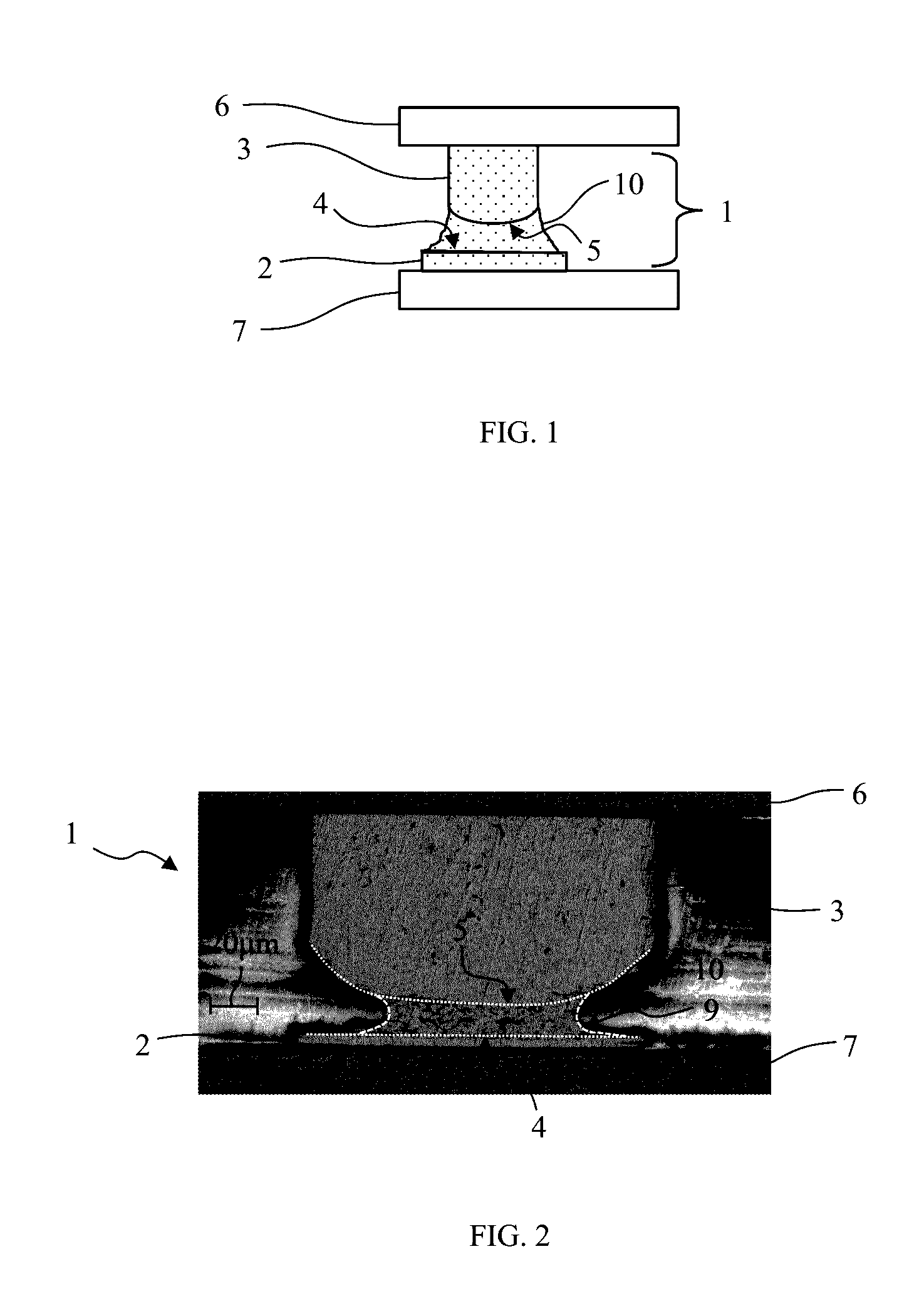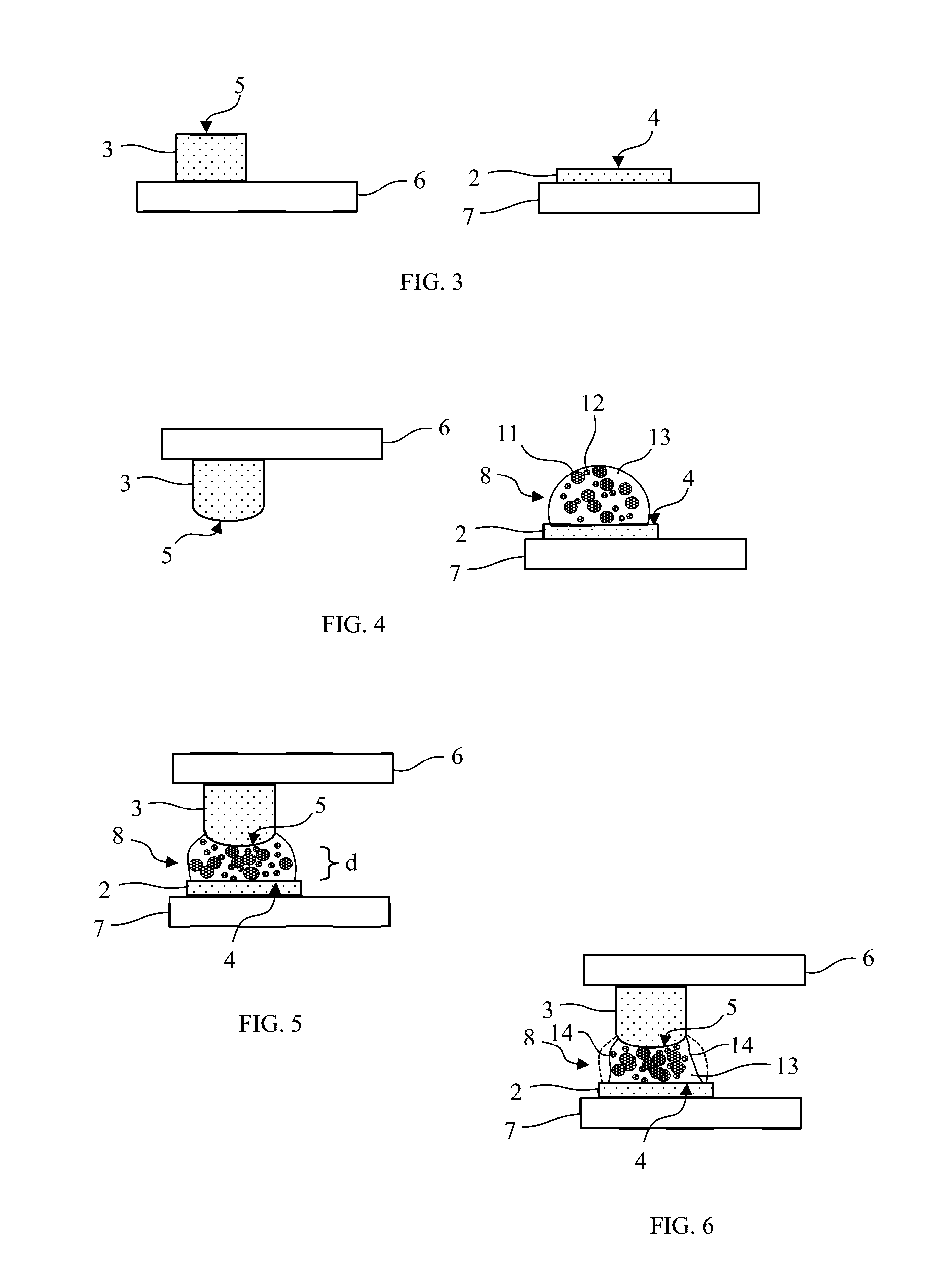Method for electrical coupling and electric coupling arrangement
a technology of electrical coupling and electrical coupling, which is applied in the direction of electrical apparatus, semiconductor/solid-state device details, semiconductor devices, etc., can solve problems such as stress on substrates and/or semiconductor chips
- Summary
- Abstract
- Description
- Claims
- Application Information
AI Technical Summary
Benefits of technology
Problems solved by technology
Method used
Image
Examples
Embodiment Construction
[0017]In this disclosure, embodiments for methods for electrically coupling at least two elements are disclosed. For example, the methods disclosed herein may include coupling a conductive pad on a substrate (first element) with a pillar protruding from a die of a microelectronic chip (second element). Often, a plurality of pads and corresponding pillars are arranged in arrays that are coupled to each other.
[0018]FIG. 1 shows a schematic cross-sectional view of an embodiment of a coupling arrangement 1 between a chip 6 and a substrate 7. In FIG. 1, an electrically conducting pillar 3 is shown protruding from the chip 6. The pillar 3 has a cylindrical shape and has a front surface 5 facing towards a pad 2. The front surface forms a copula-like surface of the pillar 3. Opposite to the front surface 5 of the pillar 3 is an electrically conducting pad 2 arranged on the substrate 7. The pad 2 has an essentially flat surface 4. In the gap between the front surface 5 of the pillar 3 and th...
PUM
 Login to View More
Login to View More Abstract
Description
Claims
Application Information
 Login to View More
Login to View More - R&D
- Intellectual Property
- Life Sciences
- Materials
- Tech Scout
- Unparalleled Data Quality
- Higher Quality Content
- 60% Fewer Hallucinations
Browse by: Latest US Patents, China's latest patents, Technical Efficacy Thesaurus, Application Domain, Technology Topic, Popular Technical Reports.
© 2025 PatSnap. All rights reserved.Legal|Privacy policy|Modern Slavery Act Transparency Statement|Sitemap|About US| Contact US: help@patsnap.com



